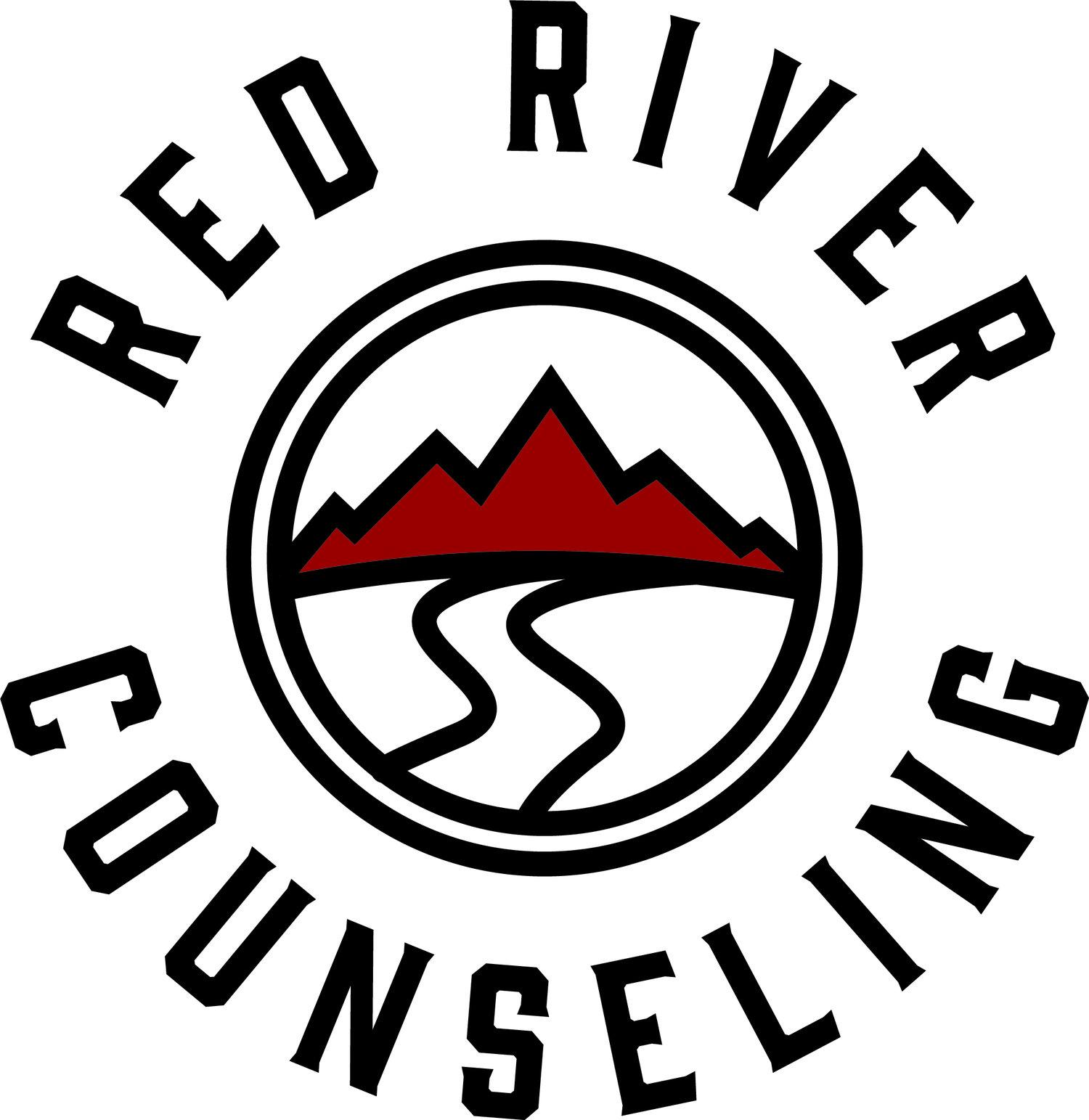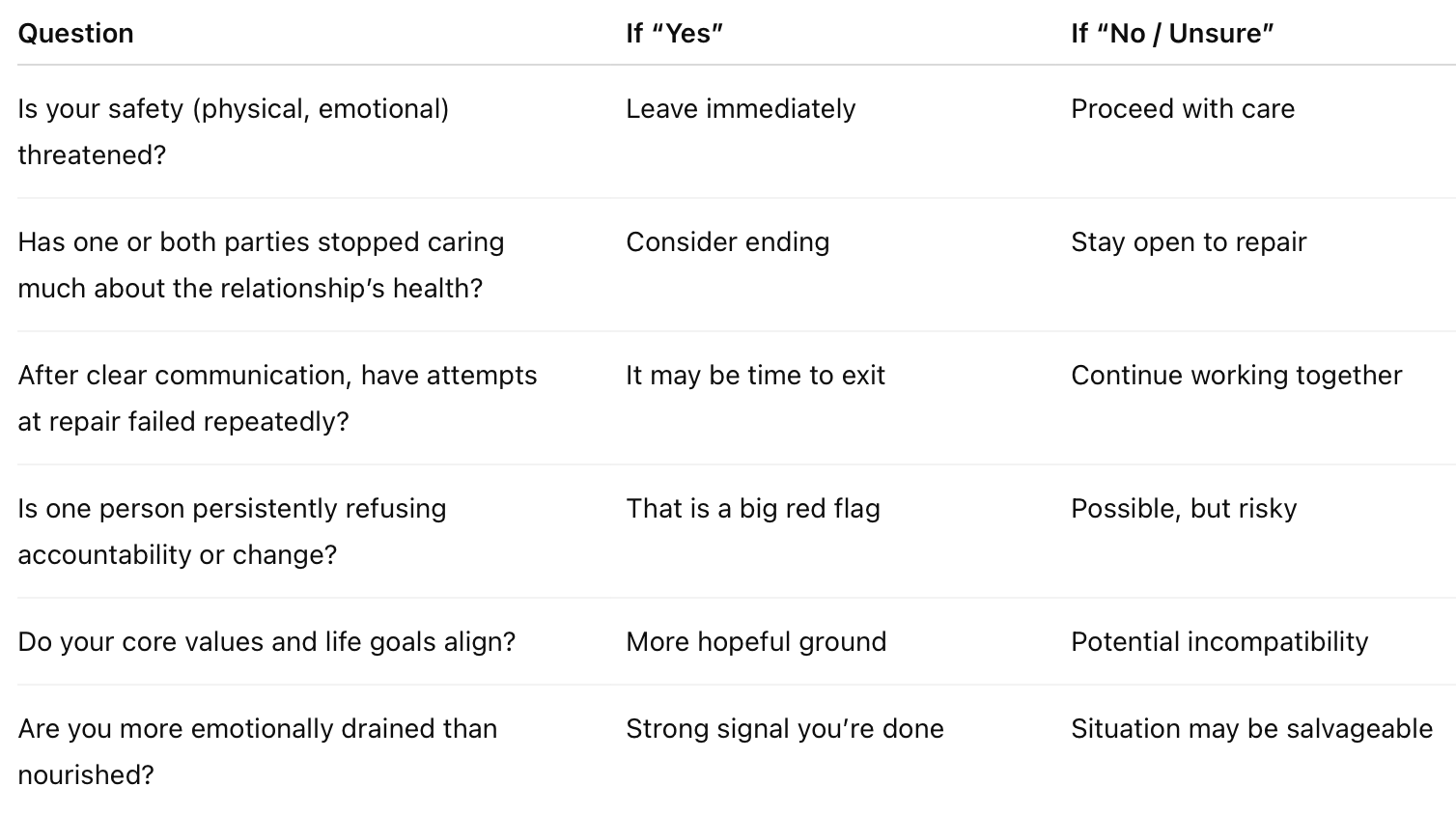When to Know It’s Time to End a Relationship (Without Falling into Cut-Off Culture)
/I reently led a small group of adolescent boys through a focused talk on healthy and unhealthy relationships. I gave them some space to ask questions (and sidenote: teenage boys have a lot of questions, they just need to feel safe enough to ask them), with several asking something akin to: ‘When a relationship is unhealthy, when do you know it’s time to end it?’ What a great, hard question, one which requires a lot of nuance, counsel, and discernment.
When to Know It’s Time to End a Relationship
In today’s culture of immediacy and social media soundbites, we often encounter messaging that encourages “cut-off culture” — the impulse to walk away from a relationship at the first sign of discomfort. Far too often difficulties and differences are framed as being toxic, and discomfort is interpreted as being unsafe. While there are times when ending things abruptly is warranted (especially in the case of abuse), cutting someone off isn’t always the healthiest or most mature response. A relationship is, by nature, a cooperative endeavor — it requires both people to show up, to communicate, to negotiate, and to grow.
Quick note: This doesn’t apply to only romantic relationships or friendships - many of these principles apply to other relationships found in employment, social or church groups, etc.
In this article, we’ll explore:
What “cut-off culture” is and its limitations
Signs that a relationship may be beyond repair
How to evaluate whether to stay and work things out — or to walk away
The Problem with “Cut-Off Culture”
In recent years, the phrase “cut them off,” “ghost,” or “block and move on” has become trendy, especially on social media. The idea is that if someone causes discomfort, you owe them nothing and should just sever ties. This approach is sometimes framed as “protecting your peace.” However, not all conflict or hurt requires an exit — sometimes what’s needed is deeper communication.
That said, cutting someone off isn’t always synonymous with healthy boundary-setting. Sometimes it is a way to avoid emotional discomfort, conversation, or growth. Over the long term, the impulse to “never tolerate pain” in relationships can backfire.
Even in family dynamics, therapists caution that estrangement (a kind of cut-off) may bring immediate relief but also long-term costs like guilt, isolation, or generational patterns of emotional cutoff.
So, the question isn’t simply “should I cut them off?” — but “has the relationship deteriorated to the point that repair is no longer feasible, or dangerous to one’s well-being?”
Signs a Relationship May Be Irreparable
Here are some red flags that suggest the relationship may be beyond healthy repair. Notice that many of these aren’t necessarily single events but patterns over time.
1. Chronic Imbalance — a One-Sided Relationship
If one person is doing nearly all the emotional labor, initiating conversations, planning, sacrificing, and the other consistently withdraws or contributes little, that imbalance takes a toll. Years ago I was on a canoeing trip in the boundary waters and I repeatedly would look back at my rowing partner and see him laid back, eyes closed, paddle across his lap. Relationships can’t function, or can’t function for long, in this way.
If you realize you’re constantly asking, “Why am I doing all this alone?” — that’s a serious sign.
2. Repeated, Unresolved Conflict
All relationships will face conflict. But when arguments loop in circles, past hurts aren’t healed, and the same issues resurface without resolution, it may hint at deeper incompatibility or relational dysfunction. Confliction is meant to lead us to greater connection (if we know how to engage it), but conflict that only leads to further conflict requires serious intervention. John Gottman, in his well-known relationship research, labels stonewalling (refusing to engage, shutting down, withdrawing) as one of the “Four Horsemen” that foreshadow relational breakdown.
Engaging conflict in a healthy way is a skill and can be learned by anyone, so long as they are willing. If you’re stuck, make sure you’re not in a one-sided relationship.
3. Loss of Trust / Major Betrayals
Trust is foundational. To quote John Gottaman again, trust is repeated experiences of trustworthiness. One major betrayal (infidelity, abandonment in crisis, deceit) can sometimes be repaired—but often it changes how one perceives the partner permanently. Rebuilding that trust, like resetting a broken bone, is possible - so long as both partners agree on doing the work.
It’s also important to note, trust runs both ways - I have to be trustworthy, and you have to choose to trust me. Whenever there is a lack of willingness to earn or grant that trust, repair is extremely difficult.
4. Lack of Intimacy
You might find that you no longer share your deepest thoughts, fears, or dreams with the partner. The emotional closeness that once existed feels hollow or muted. Intimacy is knowing and being known and is enaged in a multitude of ways. For more on that, read this article. Again, as with all of these, just because intimacy is absent, doesn’t always mean it’s impossible. Like everything else in a relationship, forming intimacy requires learned skills that most of us were not taught. If both partners are willing to risk the vulnerability to move closer to one another, then there’s always a chance.
5. Contempt, Criticism, and Lack of Respect
When one or both partners frequently attack, mock, belittle, or dismiss the other’s feelings, the emotional safety erodes. Consistent contempt or harsh criticism is highly corrosive. In signs of failing relationships, “constant criticism or contempt” is a common marker. The Gottman’s found these, as well as defensiveness, to be a part of the quartet of the four horseman of a relationship. This can also be a symptom of an abusive relationship, which we will talk about further in the following section.
6. Harm and Abuse
This is difficult to nuance, and would require many words. There is a plethora of books written on the topic, some you can find in our resource section in further reading. Sometimes we maximize our pain and call things abuse that may be inappropriate or unhealthy behaviors, while at other times our pain is minimized (by ourself or another) and we don’t even recognize we are being abused. The Duluth model is a helpful tool for getting at the core of abusive behaviors. This video can be a very helpful start if you need to investigate further.
7. No Shared Vision / Core Incompatibility
Sometimes two people are simply not aligned on key life goals (children, finances, values, faith, lifestyle). The gap isn’t necessarily a flaw — it may just be an irreconcilable difference. Again, this requires nuance. Sometimes this is a case where partners have a difficult time understanding one another, their dreams, desires and vision - while at other times they come to a place of understanding and realize they have come to a stalemate, where both people lose if they remain together. Many times, even this lack of compatability can be overcome if both partners choose to do the work.
What It Takes to Sustain a Relationship
Because relationships are mutual projects, before ending things, it helps to evaluate whether the essential ingredients are present or could be worked towards.
Mutual Willingness to Work
If only one party is invested in repair, growth, or therapy, it becomes a burden rather than a partnership. If the other person is closed to change or minimizes your feelings, there’s little ground to rebuild.
Vulnerability, Accountability & Repair
Repair requires that both partners can own mistakes, repair sincerely, and remain vulnerable. If defensiveness or projection is always the default, that blocks real connection.
Emotional Safety & Trust
One can only change when they feel safe — to express fears, needs, and doubts. Rebuilding trust after betrayal takes time, consistency, and transparency.
Effective Communication & Conflict Skills
Learning to argue, listen, pause, de-escalate, and repair is essential. Without those skills, the same destructive cycles will rerun.
Shared Goals & Values
If your big-picture life directions don’t align, repair may only mask deeper incompatibility.
All of these areas can be built up in time when we are willing to work towards them.
A Decision Framework: When to Stay & When to Walk Away
Here’s a tentative “decision framework” you might present to a client or reader:
If at least a few of those questions point toward ending, you might conclude that the relationship has run its course. I still find it helpful to get a trustworthy perspective from someone who has a proven track record of safety and honesty.
Why Ending Doesn’t Always Mean “Cut Off Cold”
If you choose to end, you can still aim for a respectful, compassionate closure. Abrupt severance may feel easier in the short run, but for many people it leaves unresolved grief and confusion. A mentor of mine use to always say ‘There’s no choosing no pain, we’re always choosing one kind of pain of another.’
That said, in relationships involving abuse, manipulation, or persistent boundary violations, a clean break — sometimes no contact — might be necessary for safety.
Conclusion & Invitation
Relationships are among the most demanding and deeply meaningful challenges we can undertake. But they only succeed when both people are willing to show up, grow, communicate, and repair. Cutting someone off at the first sign of conflict avoids the work—but usually at the cost of lost opportunities for growth, understanding, and deeper connection.
If you're reading this and wondering what to do in your own relationship, consider:
Which of the red flags above resonate with your experience?
Have you really expressed your needs and given time for change?
Do both parties seem capable of repair — or is one or both resisting?
Are you safe emotionally and physically?
If you’re uncertain or stuck in the “maybe there’s hope” zone, counseling or couples therapy can help you and your partner see more objectively whether the relationship is salvageable — or whether the healthiest path forward is to let go.
Red River Counseling offers a lot of resources towards this end, both on this website and in our offices. Here are just a few links we think may help you as you move forward.


